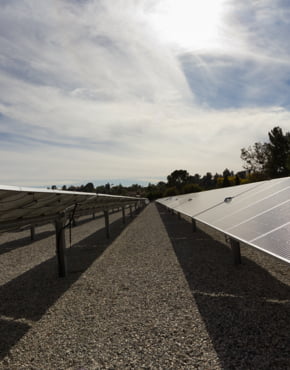Diamond Valley Lake, other depleted water storage, could be nearly restored this year
Note to editors: b-roll of today’s event is available here.
HEMET, Calif. – With winter storms increasing the availability of water supplies that were extremely limited during the punishing drought, Metropolitan Water District today marked a major milestone as it began refilling Southern California’s largest reservoir for the first time in three years.
Metropolitan and state officials came together at Diamond Valley Lake to share the operational actions being taken to maximize the amount of water stored in depleted reservoirs and groundwater basins, as well as encourage Southern Californians to continue conserving.
“Our water supplies have improved dramatically after three years of record-breaking drought,” California Secretary for Natural Resources Wade Crowfoot said. “While we’ve been blessed with abundant rain and snowfall this year, it’s only a matter of time before we experience another dry cycle. We need to press forward with Governor Newsom’s water supply strategy for a hotter, drier future. This includes continuing to invest in facilities like Diamond Valley Lake to capture and store water during really wet winters for use during extended dry periods.”
As climate change increasingly causes weather extremes, Metropolitan has quickly shifted its operations, from stretching severely limited water supplies, to now storing as much as possible in preparation for the next inevitable dry period.
“With the help of these recent storms, and the continued efficient water use of Southern Californians, we expect this year to be able to nearly replace all the withdrawals from storage we made over the past three years,” Metropolitan General Manager Adel Hagekhalil said. “We need to save every drop we can for the next dry cycle, which could be even more severe than the last one.”
Metropolitan relies heavily on its reserves in Diamond Valley Lake to provide water to Southern California. Without this 810,000 acre-foot reservoir, the impact of the dry cycle on the region would have been far worse. Built in the late 1990s, the reservoir is the largest in Southern California and is owned and operated by Metropolitan.
The district’s ability to begin storing water is due to the greater availability of supplies from the State Water Project. California announced last week that it was increasing the percentage of requested water supplies, setting the State Water Project allocation at 75 percent — 15 times higher than the allocations in each of the last two years. With this allocation, Metropolitan expects to store about 750,000 acre-feet in reservoirs and groundwater basins across the state. In addition, Metropolitan will also deliver water to help replenish local storage managed by its member agencies and is prepared to manage additional water if the allocation further increases.
The improved conditions also allowed the Metropolitan board this month to rescind its emergency conservation restrictions that had since June mandated a 35 percent reduction in water use for nearly 7 million people in portions of Ventura, Los Angeles and San Bernardino counties that are dependent on water from the State Water Project.
“We’ve never had to impose restrictions like that before. And we hope to never do it again,” Hagekhalil said. “We are prioritizing storing water that can be accessed by these communities. We’re also making investments in distribution system, storage, and local supplies like our Pure Water Southern California project to increase our resiliency for the future.”
Though storms have improved the region’s water supply outlook in the near-term, officials cautioned the public to continue its water-saving ethic. In addition to the need to replenish storage, Southern California’s other critical source of imported water – the Colorado River – remains severely stressed by long-term drought. Metropolitan may see this supply cut next year.
“I am thankful for everything the people of Southern California have done to use water wisely, particularly those who were under mandated restrictions in 2022 and the early part of this year,” said Metropolitan Vice Chair of Climate Action Heather Repenning. “But just because we’re seeing a very wet year now does not mean that we can let up. We must continue to build our reserves and reduce demands in the long-term to prepare for the drier days ahead.”
For more information on water-saving tips and rebates, visit www.bewaterwise.com.
The Metropolitan Water District of Southern California is a state-established cooperative that, along with its 26 cities and retail suppliers, provides water for 19 million people in six counties. The district imports water from the Colorado River and Northern California to supplement local supplies, and helps its members to develop increased water conservation, recycling, storage and other resource-management programs.
Media Contacts
